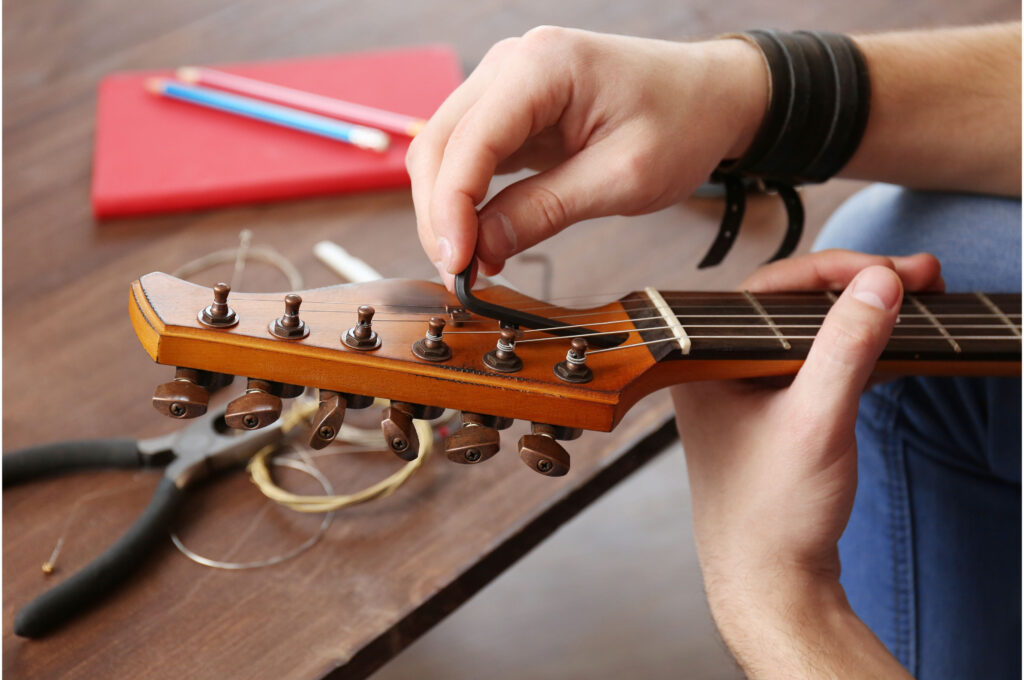Step-by-step guide to restringing an acoustic guitar like a pro

Restringing a guitar is a fundamental skill that every guitarist should master. The satisfaction of breathing new life into an instrument and the improved sound that follows make the effort worthwhile. For those who are new to playing the guitar or have never undertaken the task of changing their guitar strings, the prospect may seem a little daunting. Questions arise, such as how to remove the strings without damaging the guitar, how to get the right amount of winds around the tuning pegs, and just how apprehensive one should be about potentially snapping a new string while tuning up to pitch.
“Changing strings on your guitar can seem a difficult and time-consuming task” says James Whitten, the Marketing Manager at musicGuard.
Leading musical instrument insurer musicGuard put together a step-by-step guide on how to change the strings on an acoustic guitar and contribute to a cleaner sound and prolonged instrument life.
Removing the old strings
The process involves slackening the old strings by turning the tuning pegs in the appropriate direction, this will depend on their layout. Once the strings are slackened, they can be removed from the tuning pegs.
Each string should be individually pushed towards the bridge pin. Normally, once the string moves, the bridge pin will loosen, allowing easy removal along with the string. Occasionally however these can get stuck, but there are a few ways to remove them. Firstly, if access through the sound hole is feasible, one can push the bottom of the pins under the bridge upwards to remove them. It is advisable to use a cloth during this process, as the pins can be sharp.
If the bridge pins still will not budge, there are various bridge pin removal tools online. Using pliers should be a last resort, as there is a high risk of damaging the bridge or bridge pins.
Cleaning
Once all the strings and bridge pins are successfully removed, it is a perfect opportunity to clean the frets and fretboard of any dust or built-up grime before adding a fresh set of strings. It is important to avoid using home cleaning products as some will contain chemicals that will damage the wood and finish of the guitar. Fortunately, there are various products available at guitar dealers stores and online that are specifically formulated for guitar woods and finishes.
Preparing new strings
Once the fretboard is clean, it is crucial to determine the order of the new strings. Depending on the brand used, they will either be individually wrapped with the gauge number printed on the packaging, or they may denote the strings size with coloured ball-ends. When looking down at the guitar in a playing position, the thicker strings will sit on the top.
Restringing
After bending the strings, they should be inserted through the bridge and secured with bridge pins. This process to be repeated for all strings. Following this, the strings should be inserted through the corresponding pegs, and create a kink to measure the correct amount of winds. Carefully winding the strings onto the tuning pegs is crucial for ensuring proper placement and tension. Excess string can be trimmed, and the entire process should be repeated for all strings, starting from the thickest to the thinnest.
“Over the course of a few days the strings will continue to settle and will begin to hold their tuning more reliably, so don’t worry if it feels like the tuning needs to be adjusted soon after replacing the strings” warns Whitten.
Read more on how to restring a guitar:
https://www.musicguard.co.uk/guitar-restring





